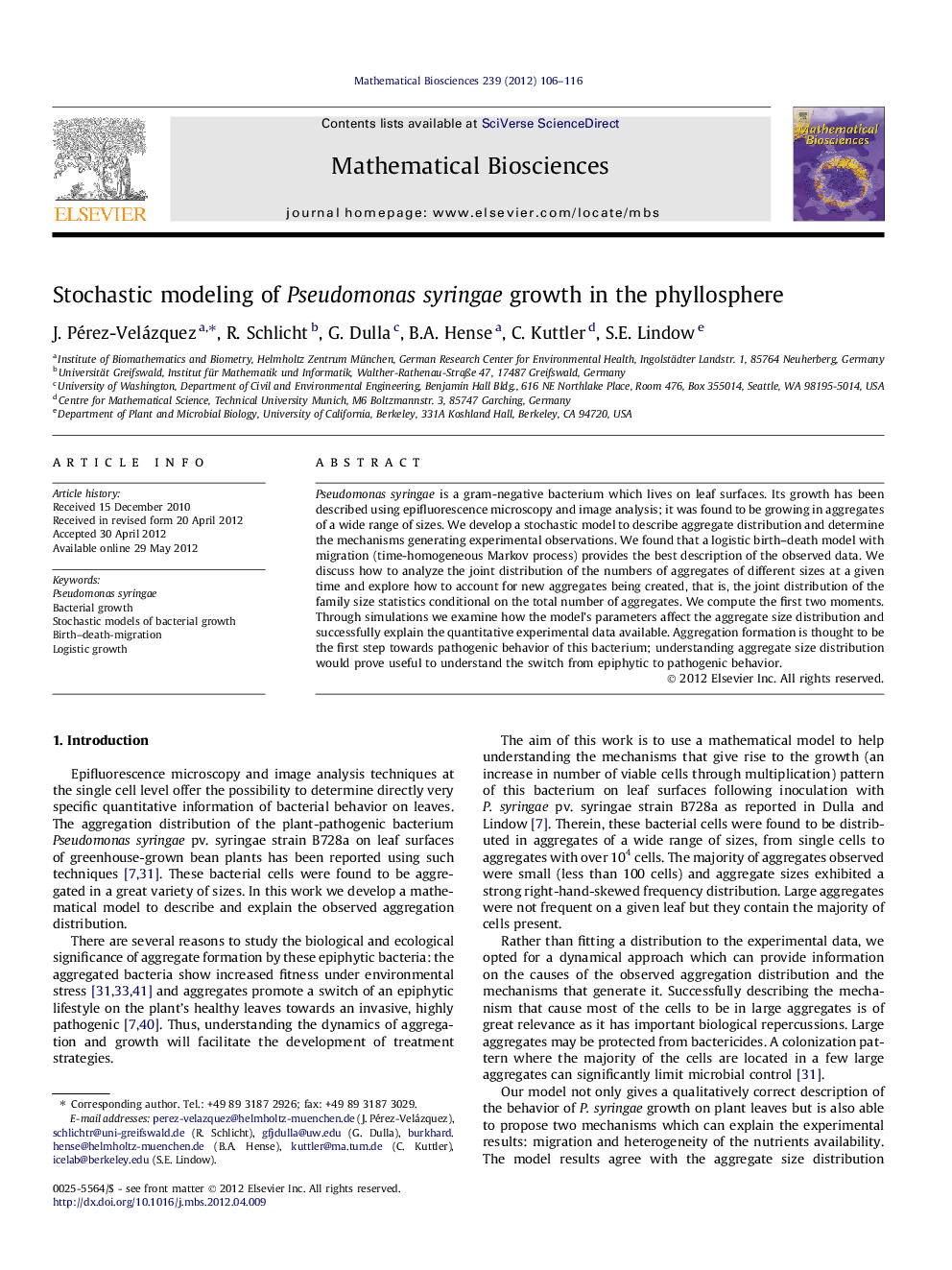| Article ID | Journal | Published Year | Pages | File Type |
|---|---|---|---|---|
| 4500277 | Mathematical Biosciences | 2012 | 11 Pages |
Pseudomonas syringae is a gram-negative bacterium which lives on leaf surfaces. Its growth has been described using epifluorescence microscopy and image analysis; it was found to be growing in aggregates of a wide range of sizes. We develop a stochastic model to describe aggregate distribution and determine the mechanisms generating experimental observations. We found that a logistic birth–death model with migration (time-homogeneous Markov process) provides the best description of the observed data. We discuss how to analyze the joint distribution of the numbers of aggregates of different sizes at a given time and explore how to account for new aggregates being created, that is, the joint distribution of the family size statistics conditional on the total number of aggregates. We compute the first two moments. Through simulations we examine how the model’s parameters affect the aggregate size distribution and successfully explain the quantitative experimental data available. Aggregation formation is thought to be the first step towards pathogenic behavior of this bacterium; understanding aggregate size distribution would prove useful to understand the switch from epiphytic to pathogenic behavior.
► We develop a stochastic model to describe aggregation of Pseudomonas syringae on leaves. ► A logistic birth–death-migration model best describes the observed data. ► We propose mechanisms explaining experimental observations: migration and nutrients. ► Heterogeneity of this bacterium’s habitat strongly influences its population dynamics.
